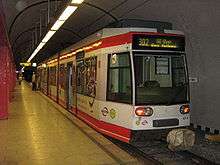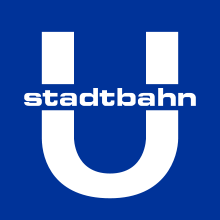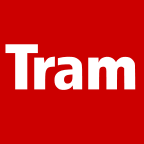Trams in Bochum/Gelsenkirchen
 A BOGESTRA tram at Bochum Hbf. | |||
| Operation | |||
|---|---|---|---|
| Locale | |||
| Open | 23 November 1894 | ||
| Status | Operational | ||
| Lines | 6 (+ 1 EVAG line: 107) | ||
| Operator(s) | Bochum-Gelsenkirchener Straßenbahnen AG (BOGESTRA) | ||
| Infrastructure | |||
| Track gauge | 1,000 mm (3 ft 3 3⁄8 in) | ||
| Propulsion system(s) | Electricity | ||
| Electrification | 600 (750) V DC | ||
| Depot(s) | 2 | ||
| Statistics | |||
| Route length | 84 km (52 mi) | ||
| |||
| Website | BOGESTRA (German) | ||
The Bochum/Gelsenkirchen tramway network (German: Straßenbahnnetz Bochum/Gelsenkirchen) is a network of tramways focused on Bochum and Gelsenkirchen, two cities in the federal state of North Rhine-Westphalia, Germany.
Opened in 1894 in Bochum and in 1895 in Gelsenkirchen, the network is operated by the Bochum-Gelsenkirchener Straßenbahnen AG (BOGESTRA). It also serves the neighbouring towns of Hattingen, Herne and Witten.
Lines
As of 2013, the following six tram lines are operated exclusively by BOGESTRA:[1]
| Line | Route | Stations[1] (underground) |
Comments |
|---|---|---|---|
| 301 | Gelsenkirchen Hbf – Bismarck – Buer – Horst | 34 (7) |
|
| 302 | Gelsenkirchen-Buer Rathaus – Gelsenkirchen Hbf – Bochum Hbf – Laer Mitte | 44 (7) |
|
| 306 | Wanne-Eickel Hbf – Bochum Hbf | 21 (1) |
Also operates as a Night Express. |
| 308 | Bochum-Gerthe Schürbankstraße – Bochum Hbf – Weitmar – Linden – Hattingen Mitte | 38 (4) |
|
| 310 | Bochum-Höntrop Kirche – Bochum Hbf – Witten Rathaus – Heven Dorf | 39 (4) |
|
| 318 | Bochum-Gerthe Schürbankstraße – Bochum Hbf – Weitmar – Linden – Dahlhausen Bf. | 32 (4) |
Also operates as a Night Express. |
In addition, a seventh tram line serves the BOGESTRA region:[1]
| Line | Route | Stations | Comments |
|---|---|---|---|
| 107 | Gelsenkirchen Hbf – Feldmark – Trabrennbahn – Essen-Katernberg – Zeche Zollverein – Essen Hbf – Bredeney | 34 | Operated by EVAG for most of the week. Only 11 stations in BOGESTRA area. |
This line, which is operated by the Essener Verkehrs-AG (EVAG) for most of the week, has its northernmost 11 stations in the BOGESTRA transit area. Early on Saturday mornings, it is operated by BOGESTRA, and runs between Gelsenkirchen Hbf and Trabrennbahn only.
Rolling stock
The tram network currently operates using low-floor trams of the types NF6D (made by DÜWAG and similar to the R1.1 cars of Bonn tramway's system) and Variobahn (by Stadler Rail). Some lines still use type M high-floor articulated trams (also from DÜWAG), but these will ultimately also be replaced by Stadler Variobahns.
The Stadtbahn line uses a separate fleet of high-floor Stadtbahnwagen B and Tango trains. It is not connected to the low-floor network and therefore trams on one system cannot operate on the other.
See also
- Bochum Stadtbahn
- Trams in Germany
- List of town tramway systems in Germany
- Rhine-Ruhr Stadtbahn
- Verkehrsverbund Rhein-Ruhr
References
Inline references
- 1 2 3 "BOGESTRA-Schienennetz" [BOGESTRA-Rail Network Plan] (PDF) (in German). BOGESTRA AG. June 2013. Retrieved 3 December 2013.
Bibliography
- Höltge, Dieter (1994). Straßen- und Stadtbahnen in Deutschland [Tramways and Stadtbahnen in Germany] (in German). Band 4: Ruhrgebiet - Von Dortmund bis Duisburg [Volume 4: Ruhr - from Dortmund to Duisburg]. Freiburg i. B., Germany: EK-Verlag. ISBN 9783882553345.
External links
-
 Media related to Trams in Bochum at Wikimedia Commons
Media related to Trams in Bochum at Wikimedia Commons -
 Media related to Trams in Gelsenkirchen at Wikimedia Commons
Media related to Trams in Gelsenkirchen at Wikimedia Commons - Bochum database / photo gallery at Phototrans – in various languages, including English.
- Gelsenkirchen database / photo gallery at Phototrans – in various languages, including English.
- Bochum/Gelsenkirchen database / photo gallery and Bochum/Gelsenkirchen tram list at Urban Electric Transit – in various languages, including English.
Coordinates: 51°28′28″N 07°13′30″E / 51.47444°N 7.22500°E




